📘 Education: Essential Concepts for Reading Comprehension
Education is a cornerstone of personal and societal development, making it a recurring theme in reading comprehension passages. Understanding key educational concepts helps in grasping critical discussions about the evolution of learning systems, equity in education, and the integration of technology into teaching methodologies. Passages often examine the intersection of education, technology, and policy, exploring how these changes influence individuals and communities globally.
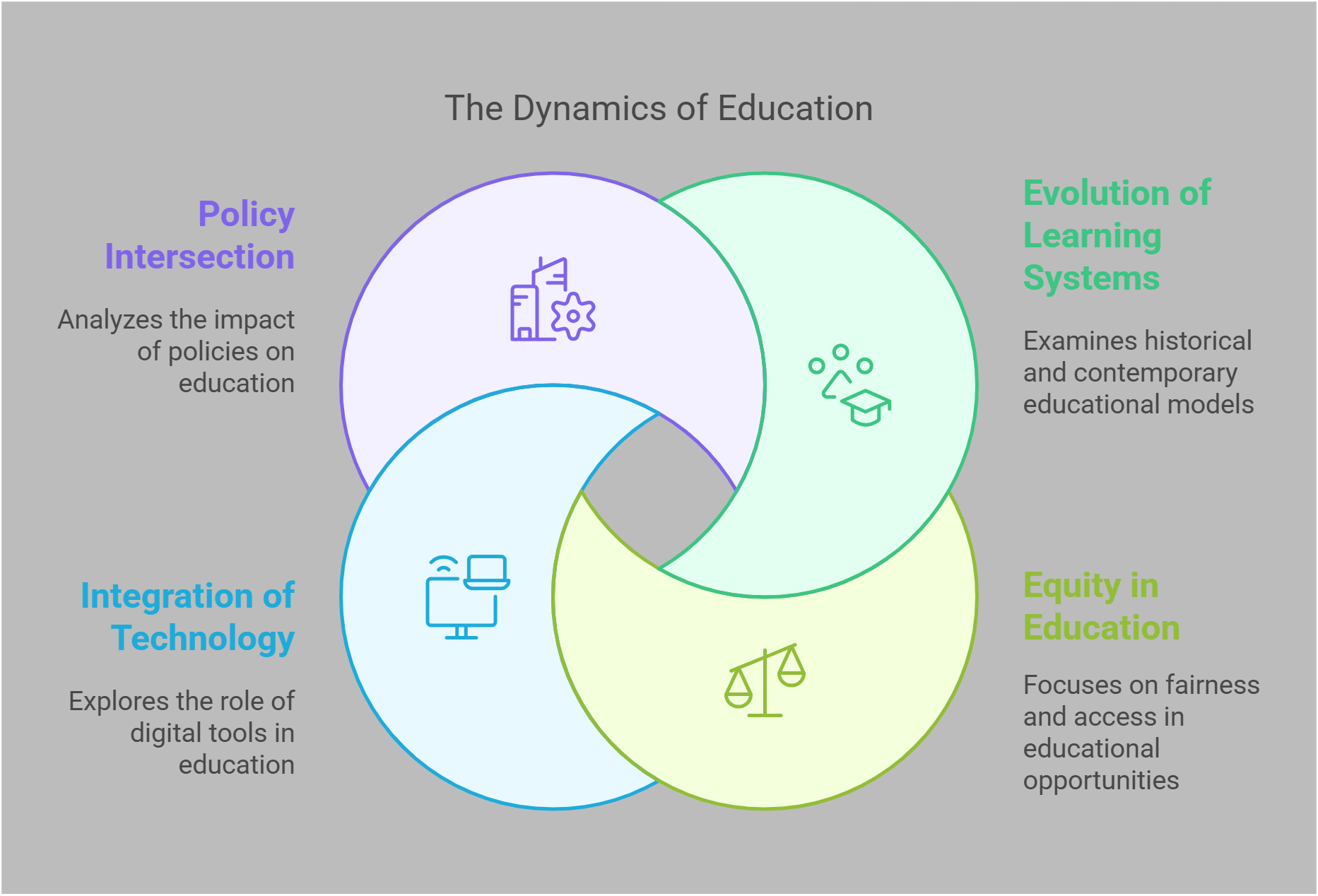
📋 Overview
In this guide, we’ll explore these key education-related concepts:
- Digital Learning Trends
- Gamification in Education
- Global Classrooms
- Micro-credentials
- Equity in Education
- Pedagogy
- Curriculum Development
- Educational Psychology
- Lifelong Learning
- Educational Technology
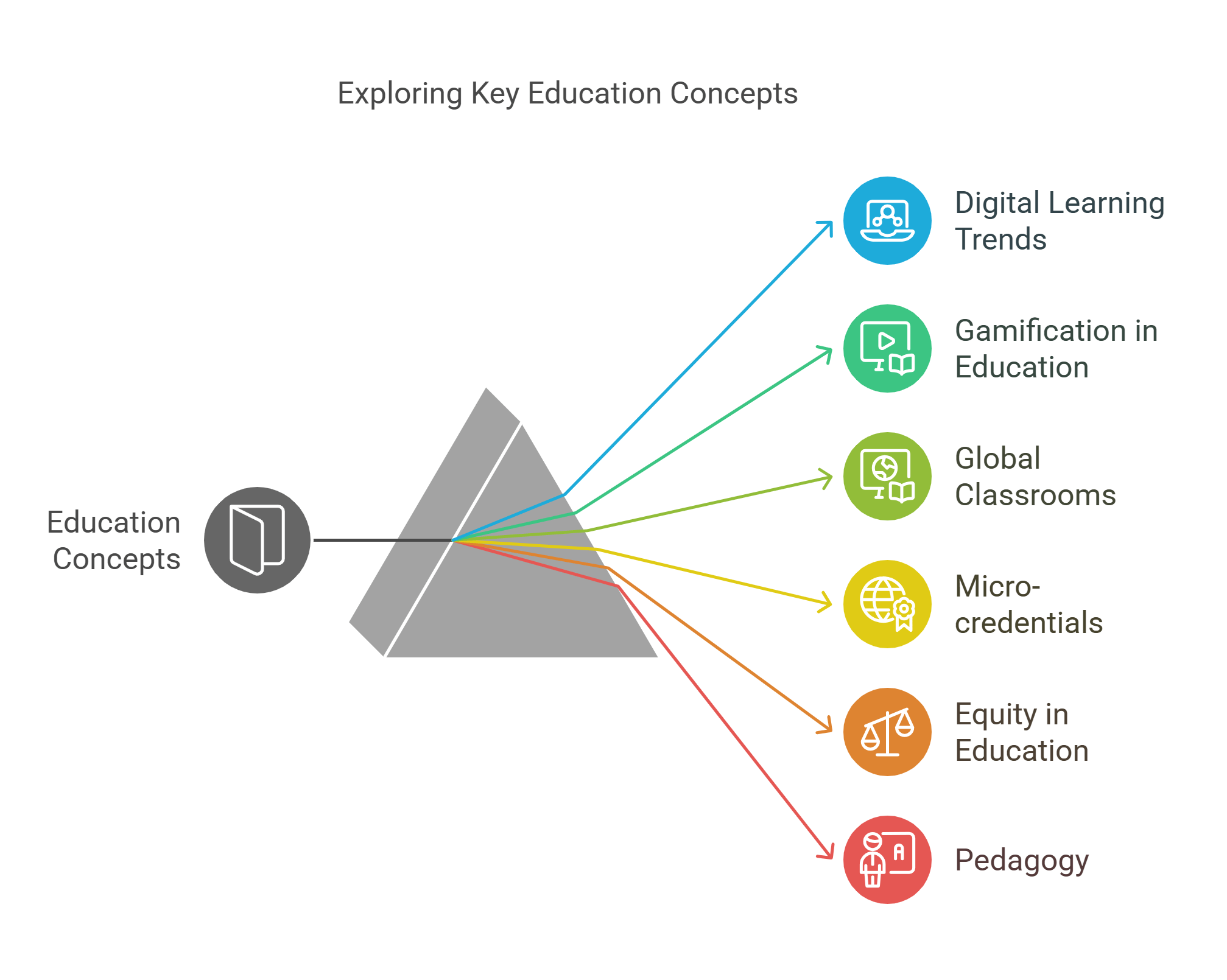
🔍 Detailed Explanations
1. Digital Learning Trends
Digital learning trends represent the shift from traditional classroom settings to online and hybrid models powered by technology. These trends encompass interactive platforms, AI-driven personalized learning, and collaborative tools that redefine how knowledge is delivered and absorbed. They promote flexibility, accessibility, and scalability in education.
- Blends traditional and digital methods.
- Promotes interactive and personalized learning.
- Makes education accessible globally.
- Adapts to individual learning speeds.
- Incorporates collaborative tools for group learning.
Explained Simply: Imagine your classroom is like a superhero team—everyone learns in their own special way. Digital learning is like giving every superhero their own gadget to learn faster and better!
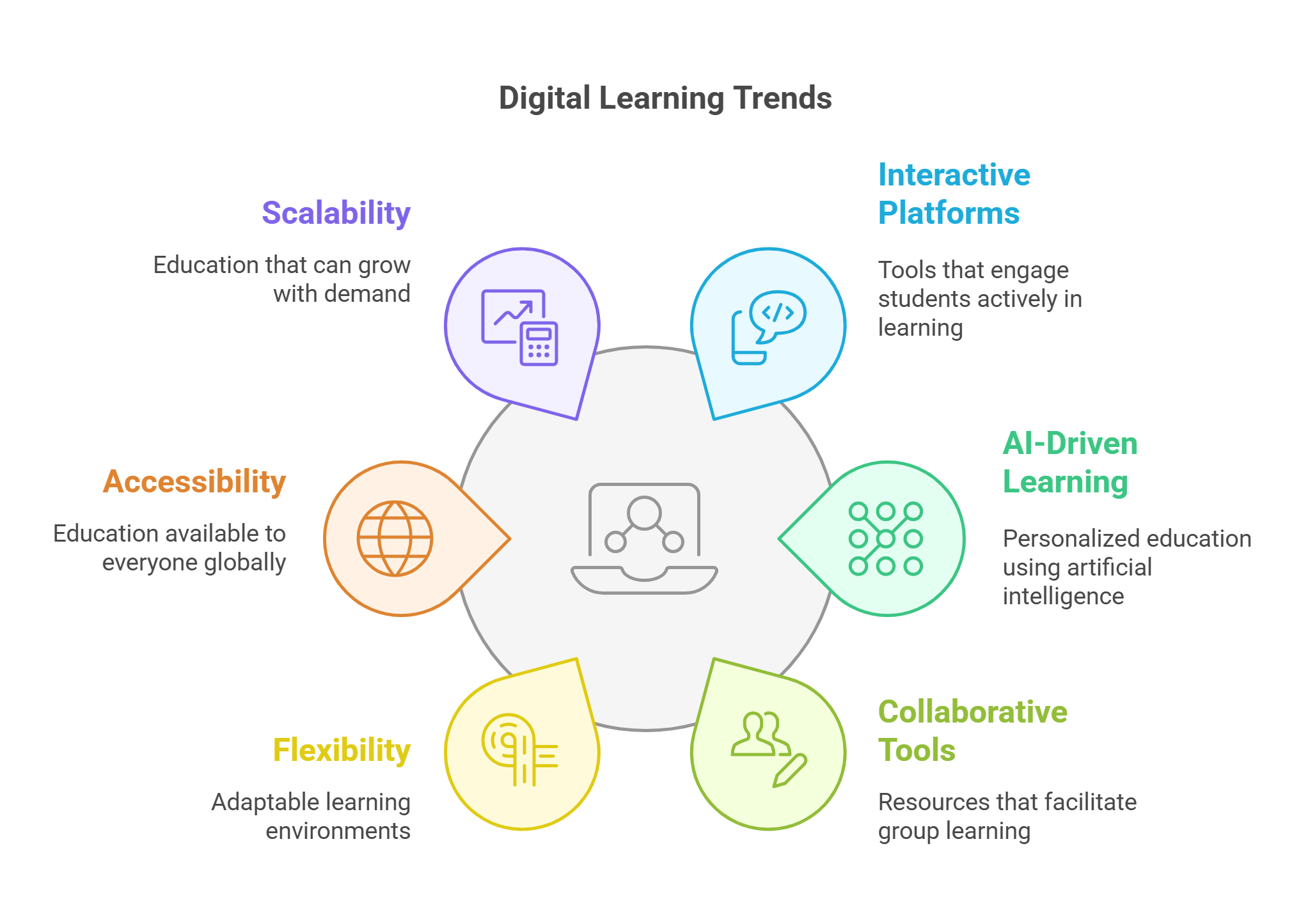
2. Gamification in Education
Gamification refers to integrating game-like elements into learning environments to make education more engaging and enjoyable. Features such as points, leaderboards, and badges motivate students to participate actively and achieve their goals. This approach promotes competition, collaboration, and problem-solving skills, making learning feel like a fun challenge.
- Introduces game mechanics into learning.
- Boosts student motivation and participation.
- Encourages collaboration and healthy competition.
- Develops problem-solving and critical thinking skills.
- Applicable in both classrooms and digital platforms.
Explained Simply: Imagine doing homework where every time you solve a math problem, you earn points like in a video game. The more points you get, the closer you are to unlocking cool rewards—learning feels like playing your favorite game!
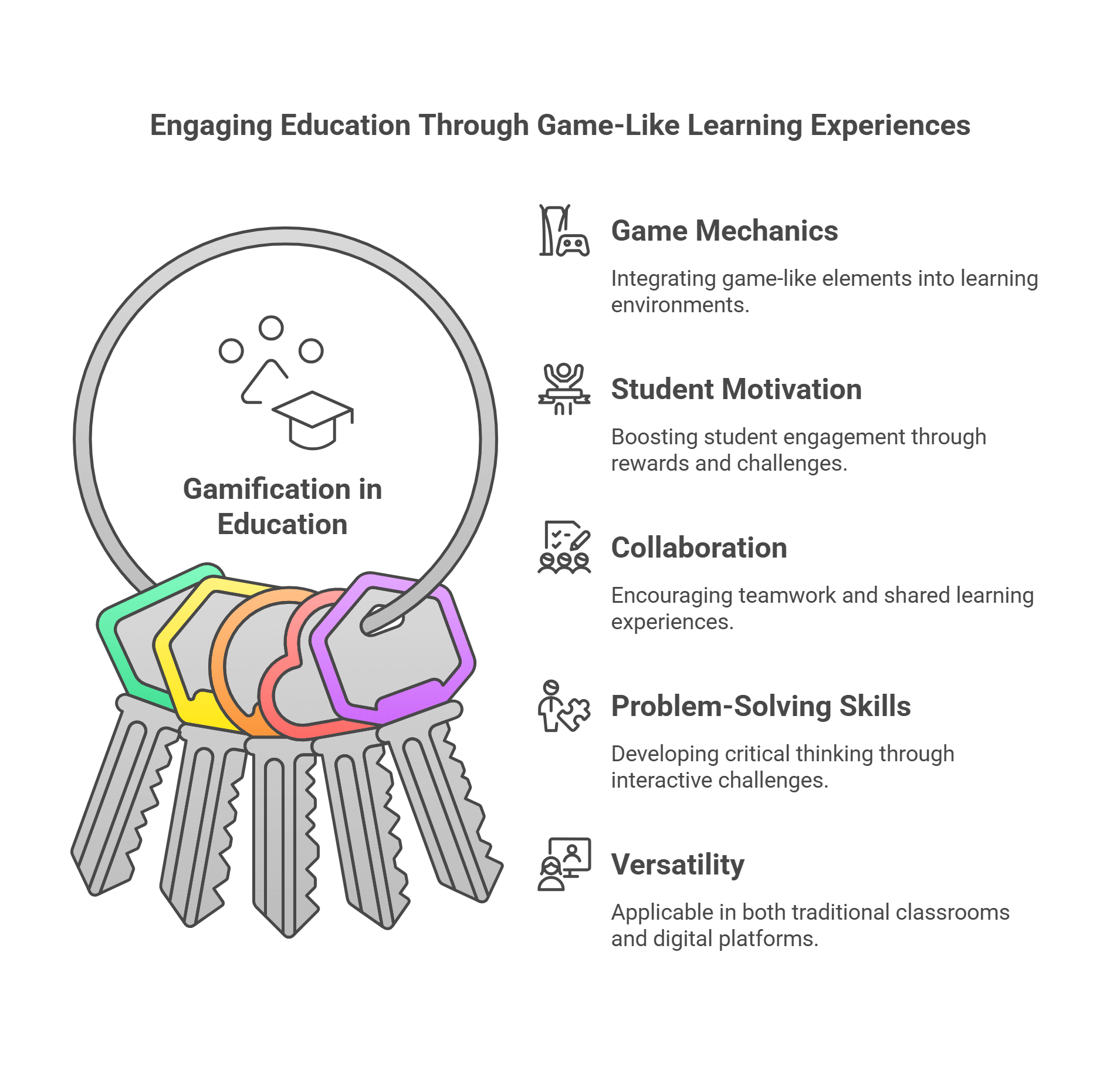
3. Global Classrooms
Global classrooms connect students and teachers from around the world through digital platforms. This concept fosters cross-cultural understanding, collaboration, and shared learning experiences. By breaking geographical barriers, global classrooms prepare learners to thrive in a connected world, encouraging a global perspective on issues like sustainability, technology, and cultural exchange.
- Brings students together from different countries.
- Promotes cultural understanding and collaboration.
- Enhances learning with diverse perspectives.
- Uses technology to connect global communities.
- Prepares students for global challenges and opportunities.
Explained Simply: Imagine having friends in different countries and learning with them in the same online classroom. You could share your ideas, learn their stories, and solve puzzles together, no matter where they live!
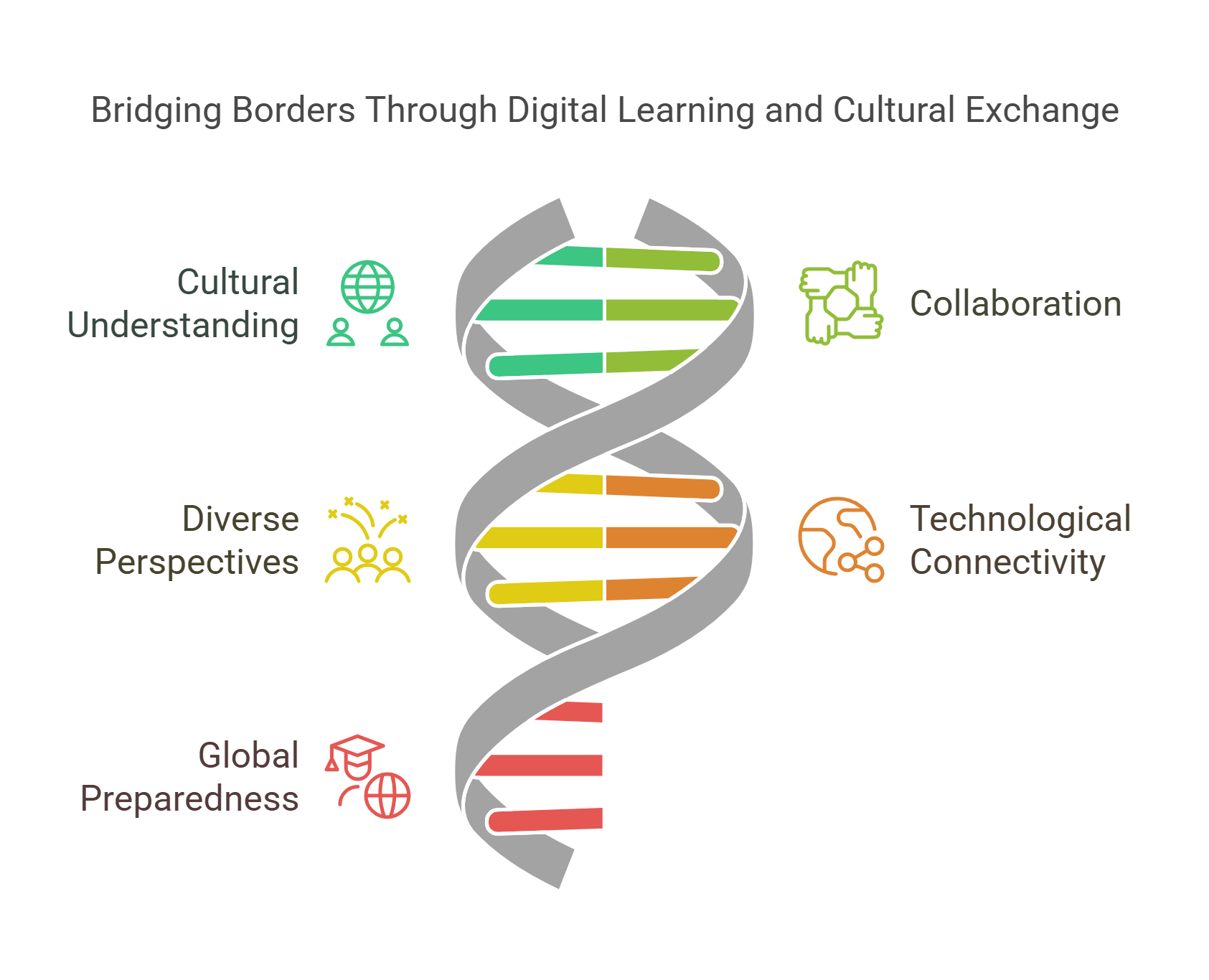
4. Micro-credentials
Micro-credentials are short, focused certifications that validate a specific skill or knowledge area. Unlike traditional degrees, micro-credentials are quicker to earn and are often designed to meet the demands of modern industries. They support lifelong learning by allowing individuals to acquire new skills as needed in a fast-changing world.
- Short certifications focusing on specific skills.
- Faster to earn compared to degrees.
- Aligned with industry and workforce demands.
- Encourages continuous learning and upskilling.
- Stackable credentials can build toward larger qualifications.
Explained Simply: Think of it like earning badges in Scouts—each badge shows you’ve mastered a special skill, like tying knots or building a campfire. Micro-credentials are like badges for grown-ups learning new things!
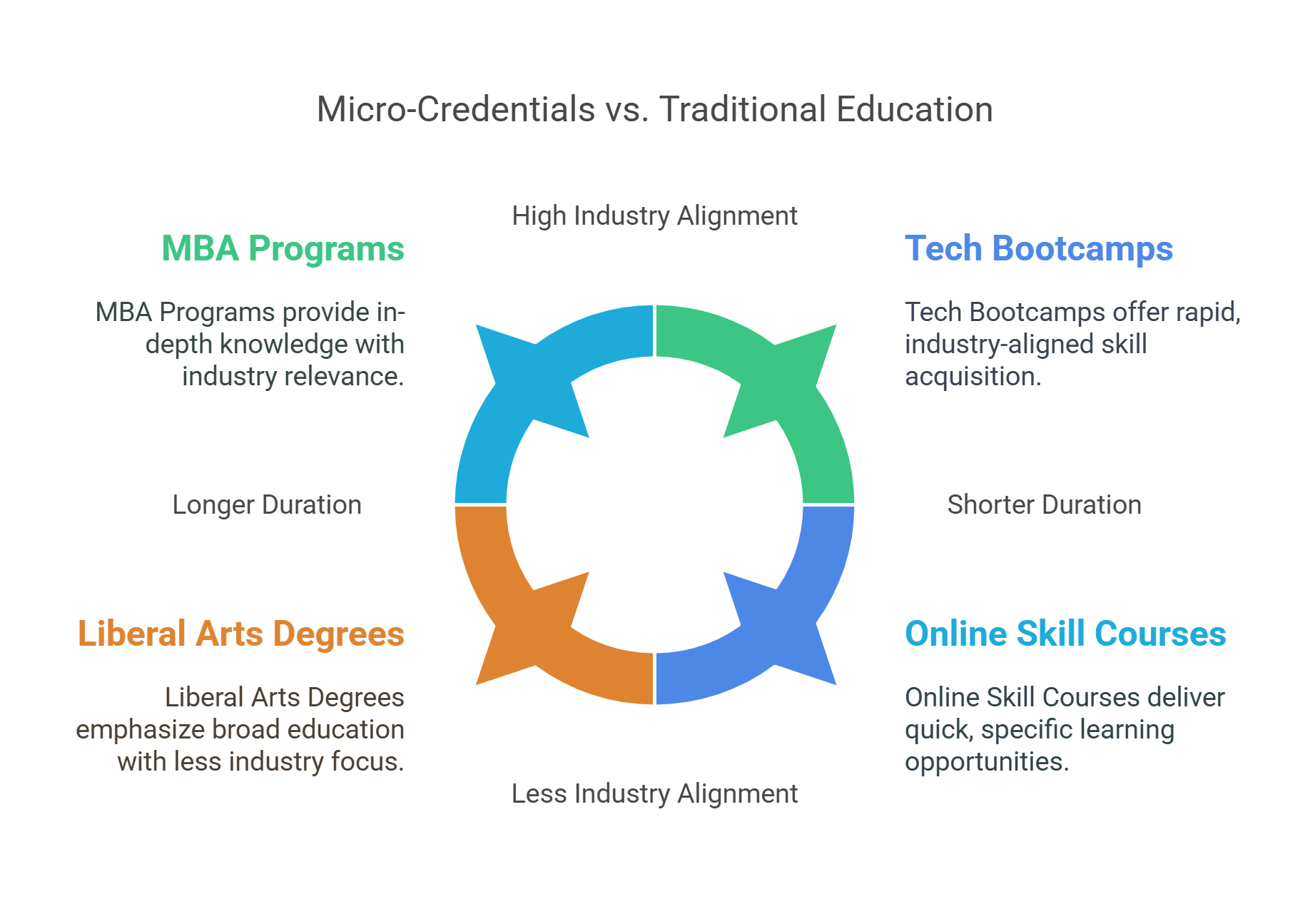
5. Equity in Education
Equity in education ensures that all students have access to quality learning opportunities, regardless of their backgrounds, abilities, or socioeconomic status. This concept focuses on removing barriers and providing resources to create a fair and inclusive educational system where everyone can succeed.
- Promotes fairness in education access and quality.
- Addresses systemic barriers like poverty or discrimination.
- Ensures resources are distributed based on individual needs.
- Encourages inclusivity and diversity in learning.
- Builds a foundation for social equality.
Explained Simply: Imagine everyone is running a race, but some kids don’t have shoes, and others are already far ahead. Equity means making sure everyone has good shoes and starts at the same place, so it’s a fair race for all.
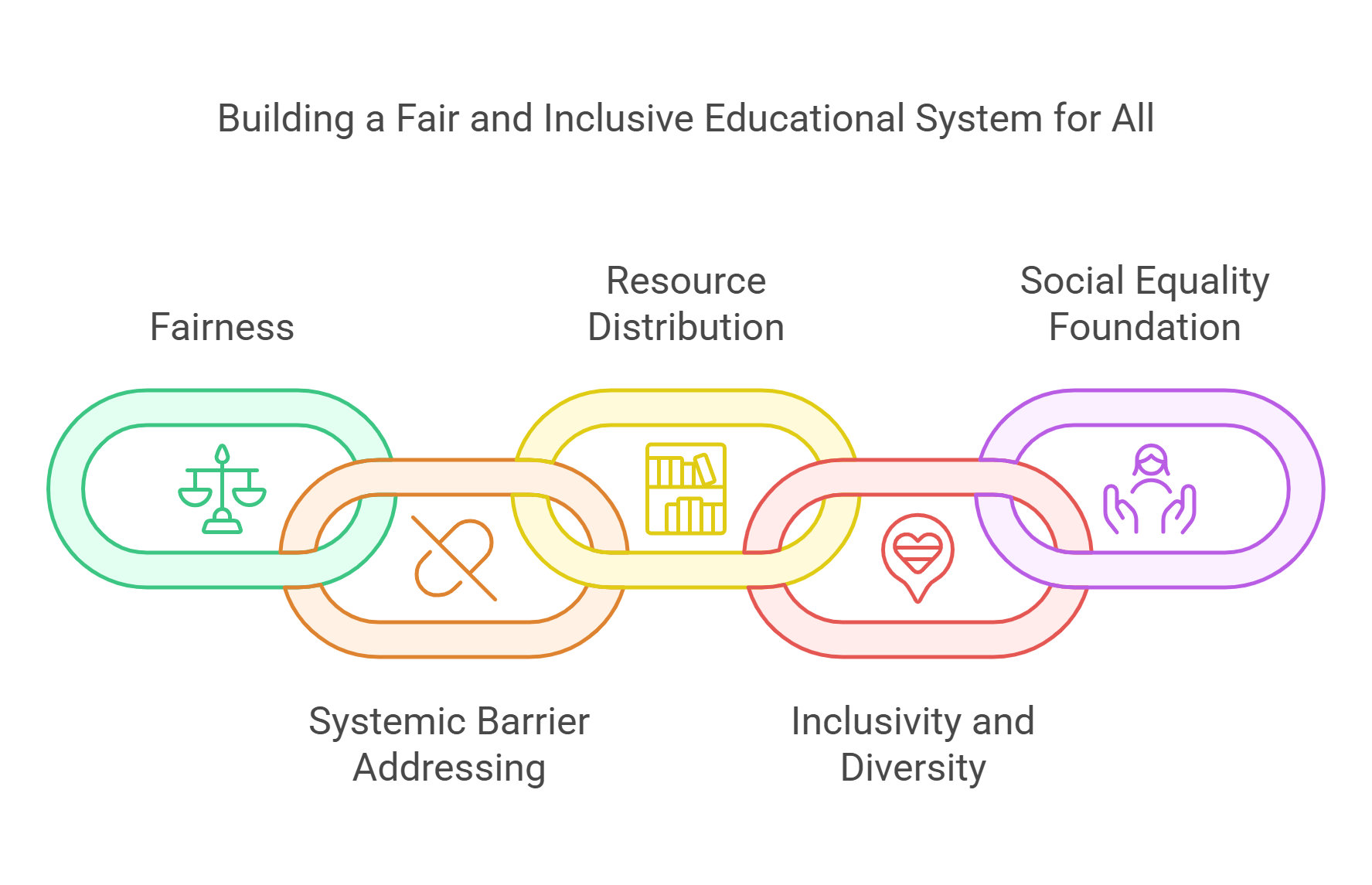
6. Pedagogy
Pedagogy refers to the art and science of teaching. It involves choosing the best methods, strategies, and techniques to help students learn effectively. A strong pedagogical approach considers students’ needs, interests, and learning styles, ensuring that education is engaging and impactful.
- Focuses on teaching methods and strategies.
- Tailors learning to student needs and interests.
- Encourages active participation and engagement.
- Incorporates research-based approaches.
- Enhances the overall learning experience.
Explained Simply: Think of pedagogy like cooking a meal—teachers pick the right recipe (methods) and ingredients (activities) to make sure the meal (lessons) is tasty and everyone enjoys it!
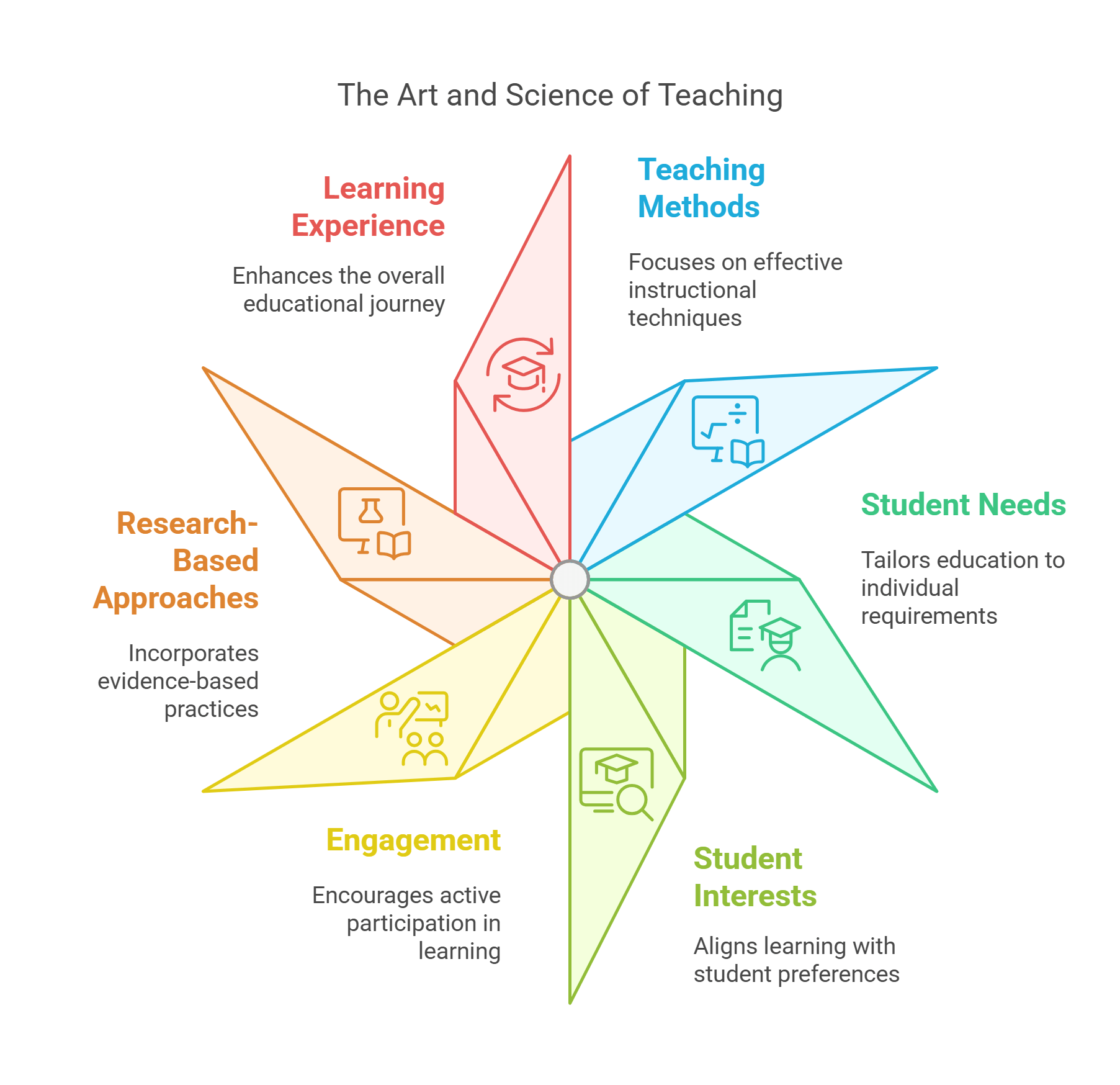
7. Curriculum Development
Curriculum development involves designing and organizing what students will learn in a specific course or program. It ensures that the content is relevant, engaging, and aligned with educational goals. A well-designed curriculum balances theoretical knowledge, practical skills, and critical thinking.
- Defines what students will learn.
- Balances theory, practice, and critical thinking.
- Adapts to societal and industry needs.
- Aligns with educational standards.
- Evolves with new knowledge and teaching methods.
Explained Simply: Imagine planning a treasure hunt—you decide what clues to give, where to hide the treasure, and how to make it fun. Curriculum development is like planning a treasure hunt for learning!
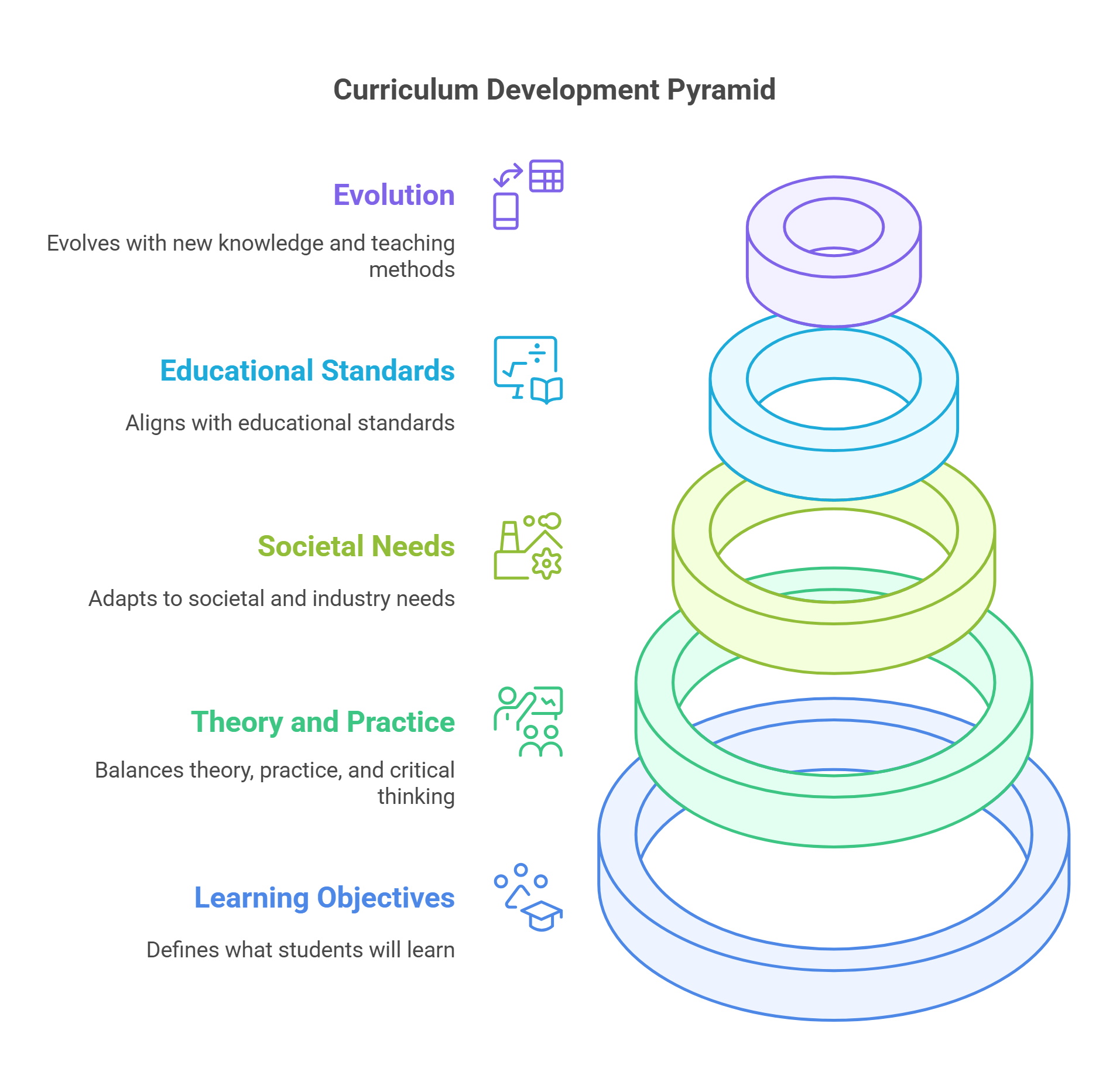
8. Educational Psychology
Educational psychology studies how people learn and how teachers can help them learn better. It looks at factors like motivation, memory, and emotions to understand what helps or hinders learning. This field helps create teaching strategies that support every student’s growth.
- Examines how learning happens.
- Studies motivation, emotions, and memory.
- Helps teachers support different learning styles.
- Addresses challenges like anxiety or attention issues.
- Improves educational outcomes for all students.
Explained Simply: It’s like being a detective for learning—figuring out what makes your brain work best and how teachers can make learning easier and more fun for you.
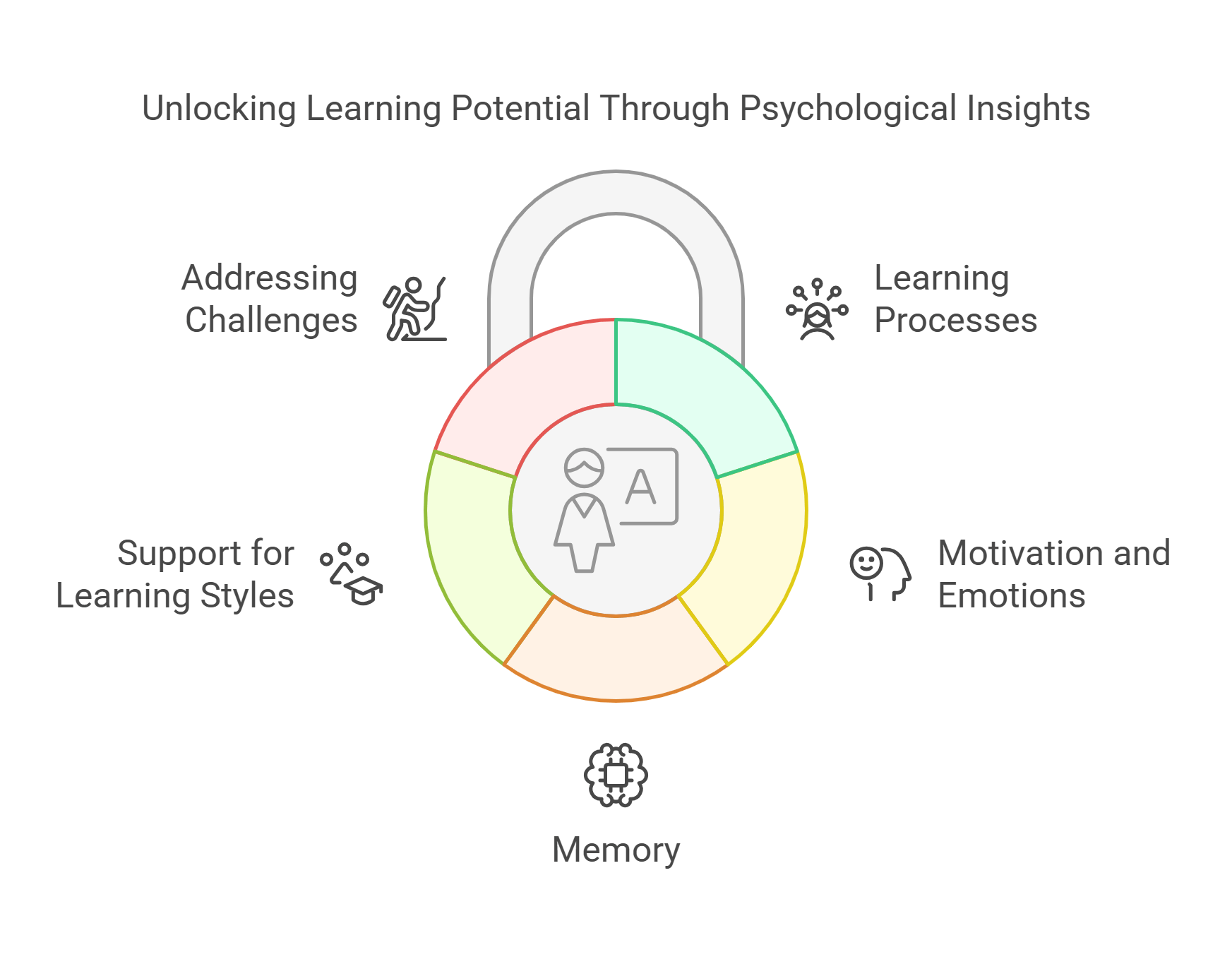
9. Lifelong Learning
Lifelong learning is the ongoing pursuit of knowledge and skills throughout a person’s life. It emphasizes curiosity and adaptability, helping individuals stay updated in a rapidly changing world. This mindset supports both personal growth and professional success.
- Encourages learning at all ages and stages of life.
- Adapts to new challenges and opportunities.
- Fosters curiosity and continuous improvement.
- Includes formal and informal learning experiences.
- Essential for personal and professional growth.
Explained Simply: Lifelong learning is like always being ready to learn new things—whether it’s how to bake a cake, play a new game, or fix a bike. There’s no age limit to learning!
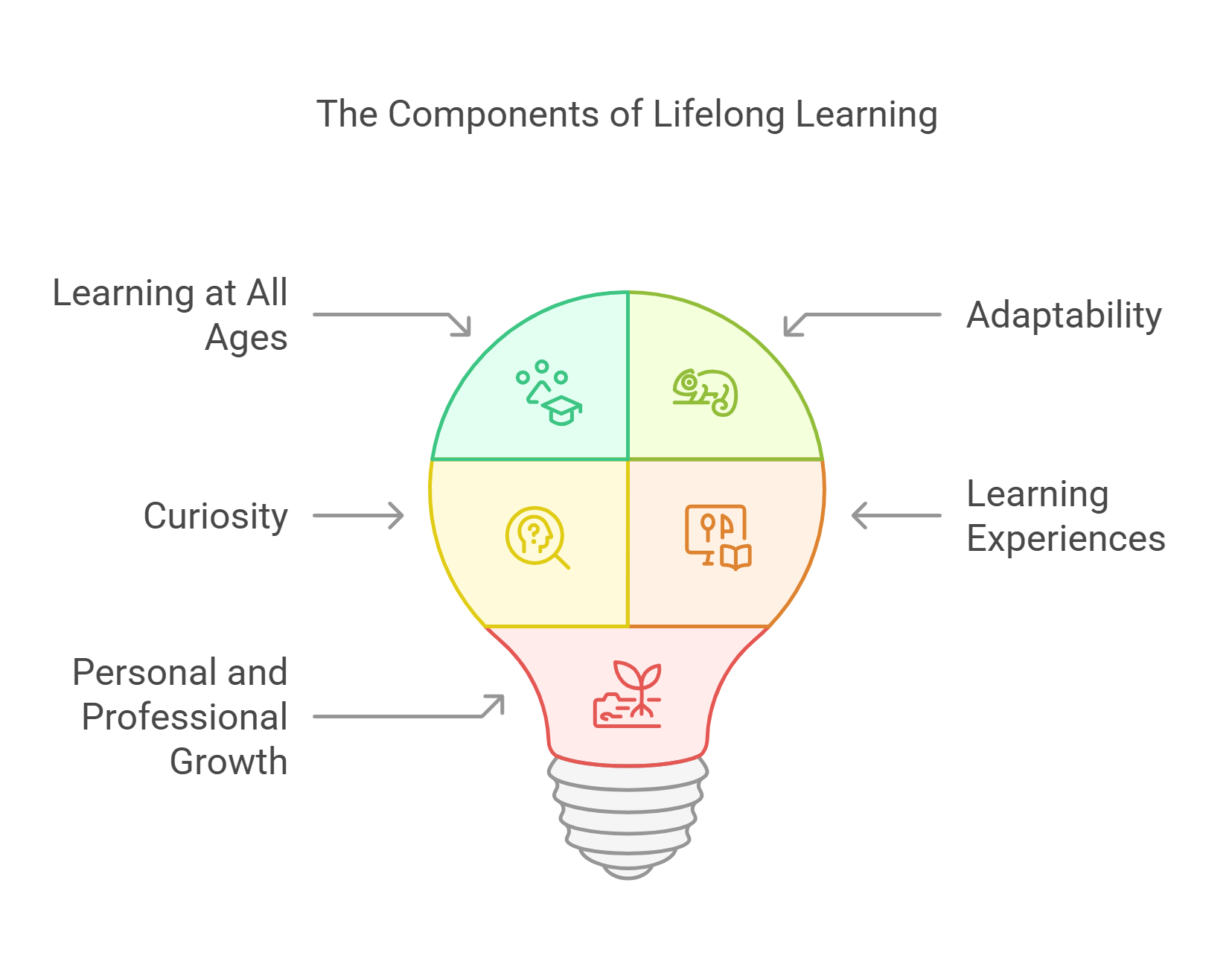
10. Educational Technology
Educational technology integrates digital tools into teaching and learning processes. From virtual reality to AI tutors, ed-tech enhances engagement, accessibility, and efficiency in education. It bridges gaps in traditional systems and enables personalized learning experiences.
- Uses tools like VR, AI, and apps in education.
- Makes learning accessible and engaging.
- Supports personalized and adaptive learning paths.
- Bridges gaps in traditional teaching methods.
- Prepares students for a tech-driven world.
Explained Simply: Educational technology is like turning your classroom into a magical place where lessons come to life on screens, in games, or even through virtual adventures!
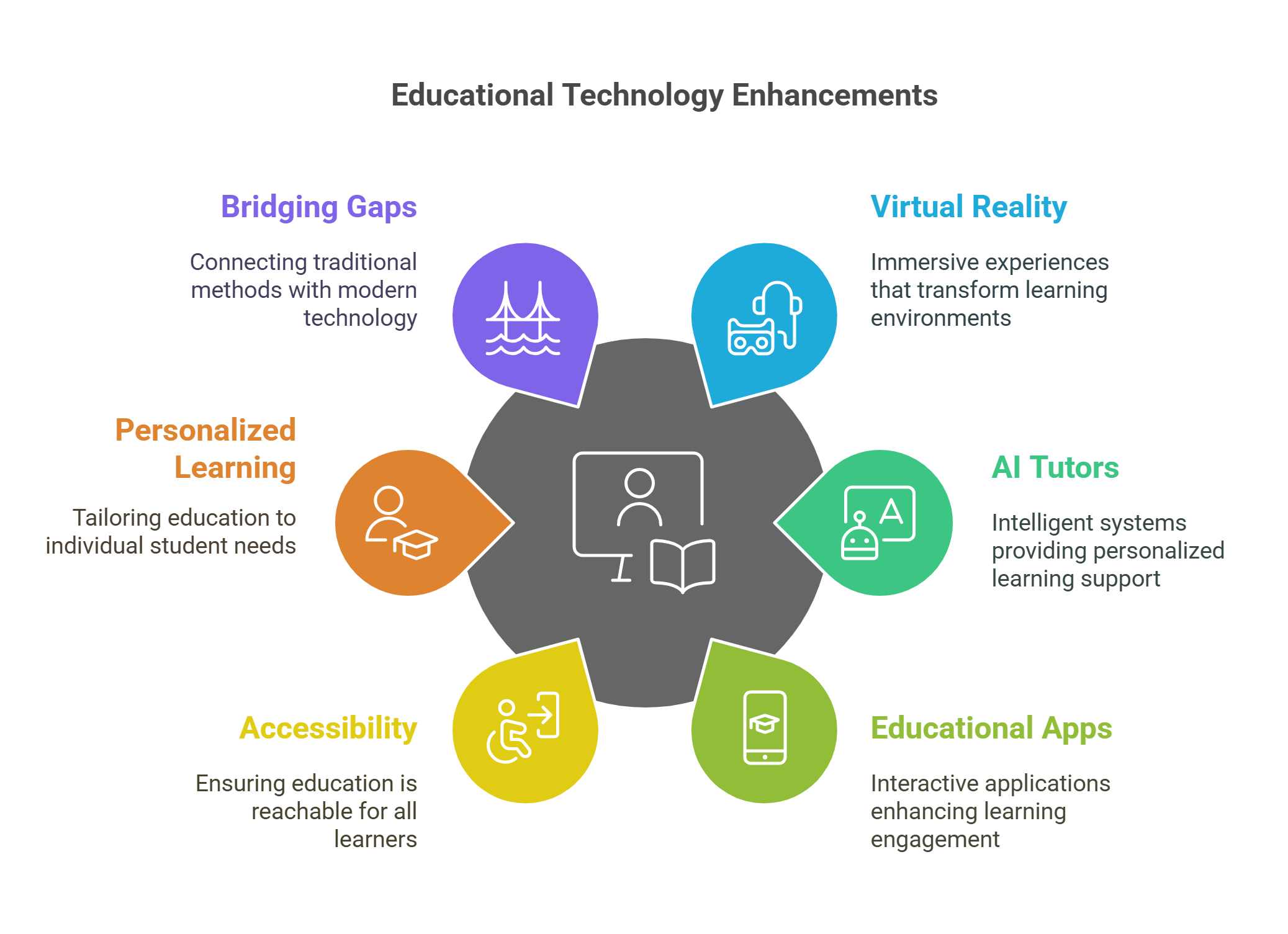
✨ Conclusion
Understanding educational concepts helps analyze reading comprehension passages discussing how education evolves to meet modern challenges. Familiarity with these ideas enhances critical thinking and equips you to engage thoughtfully with texts exploring the future of learning and its impact on individuals and societies.











